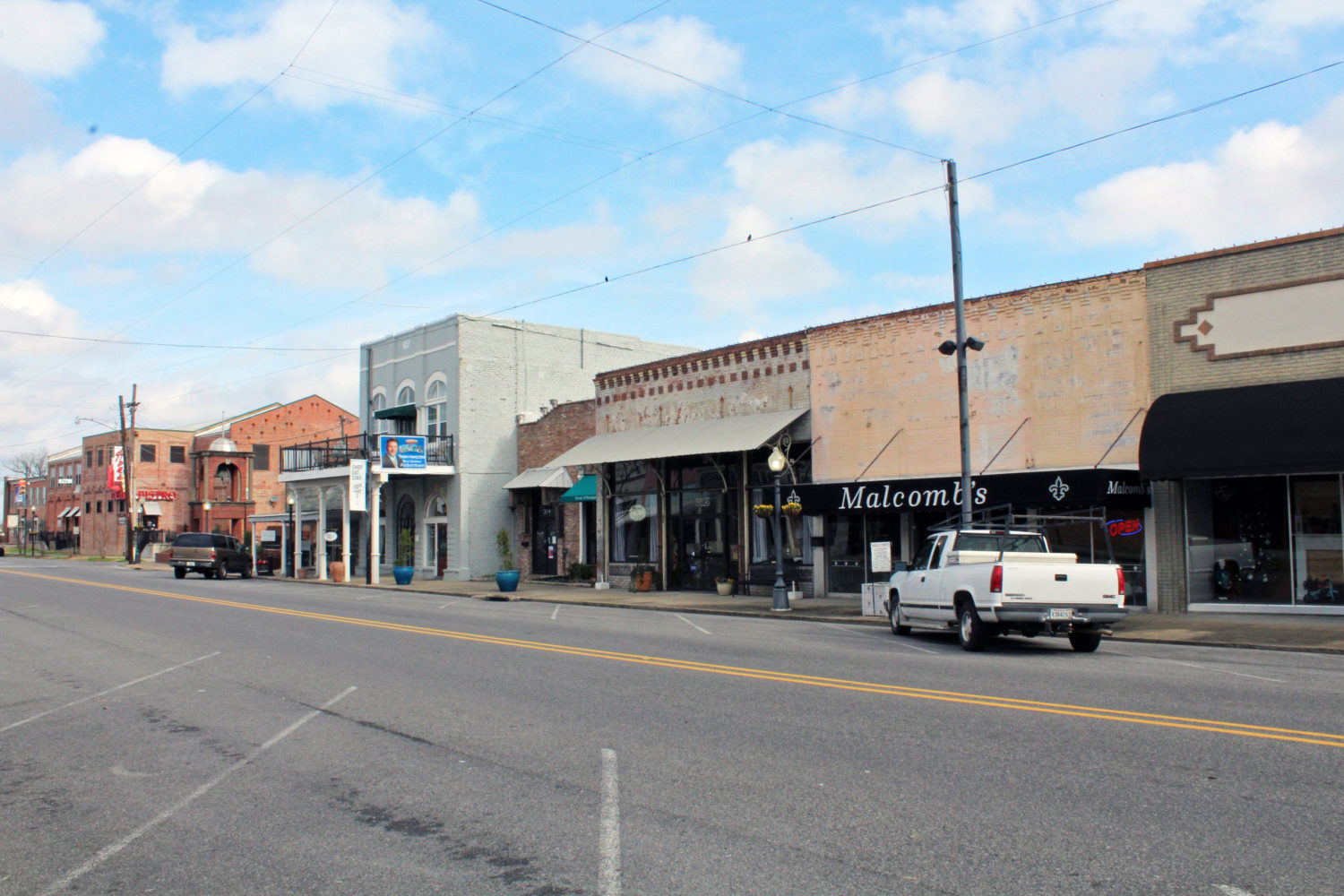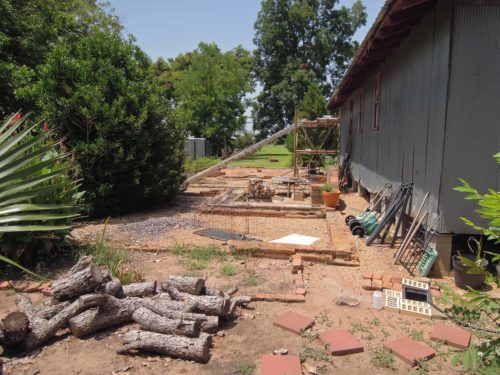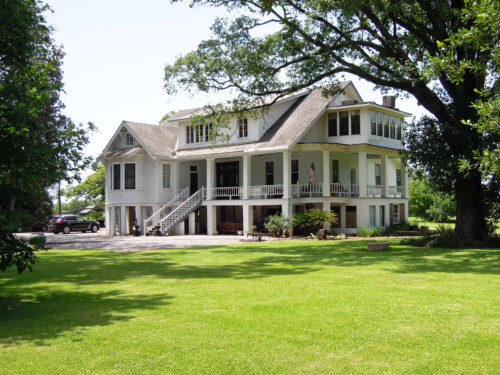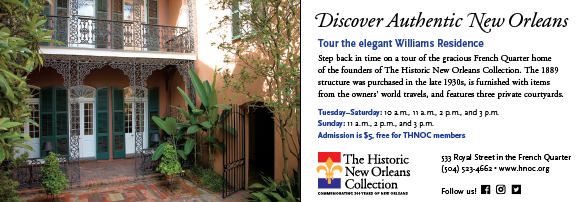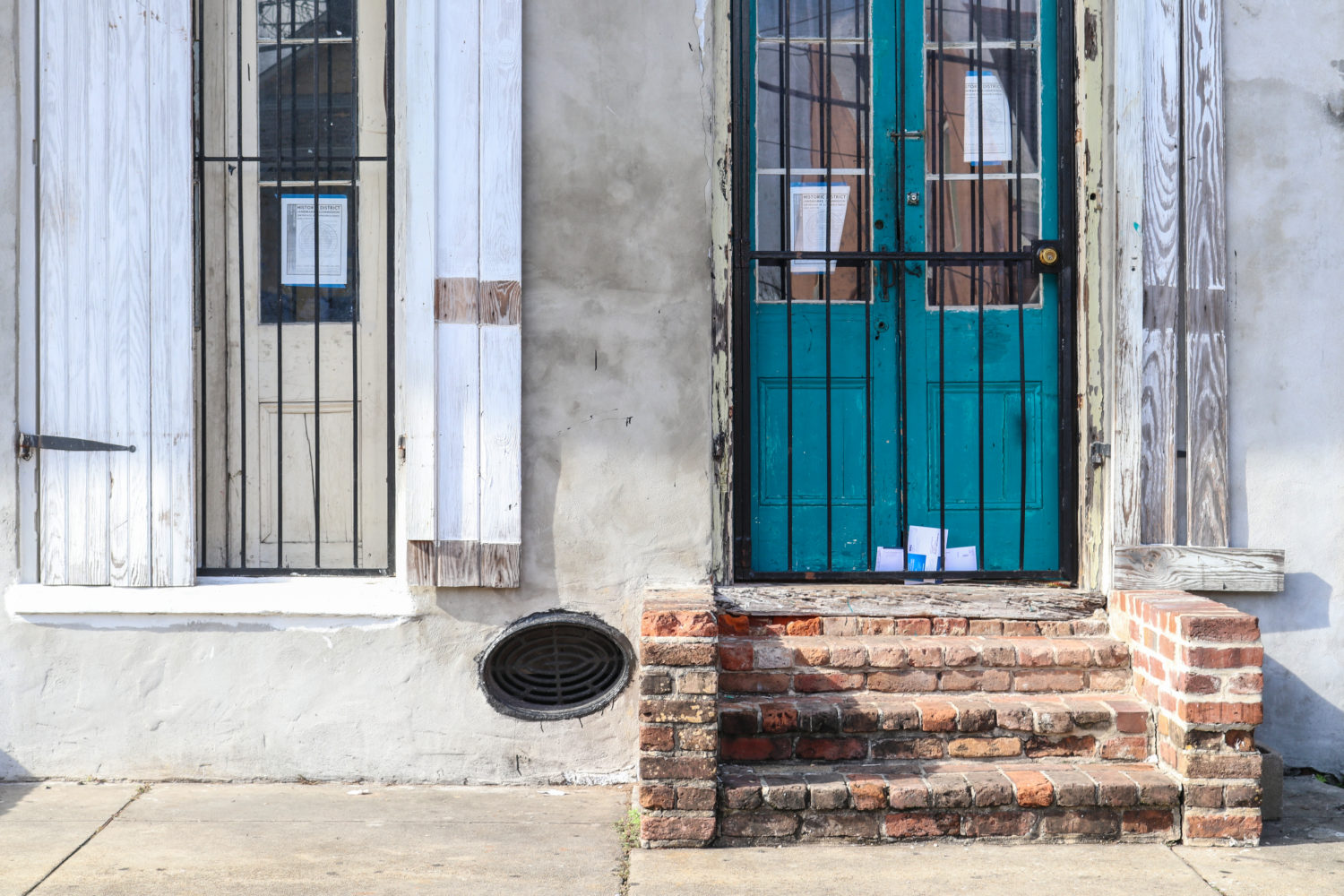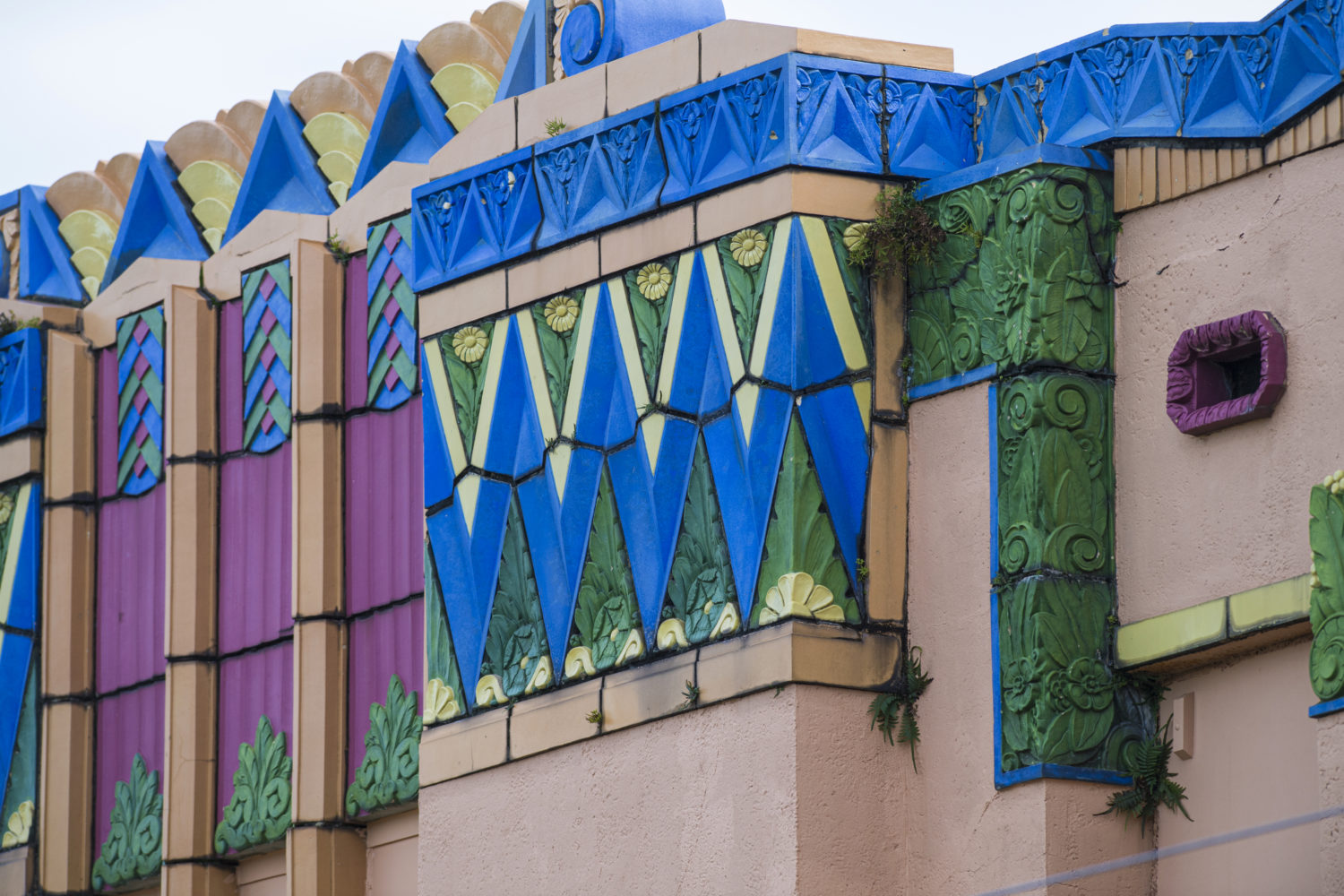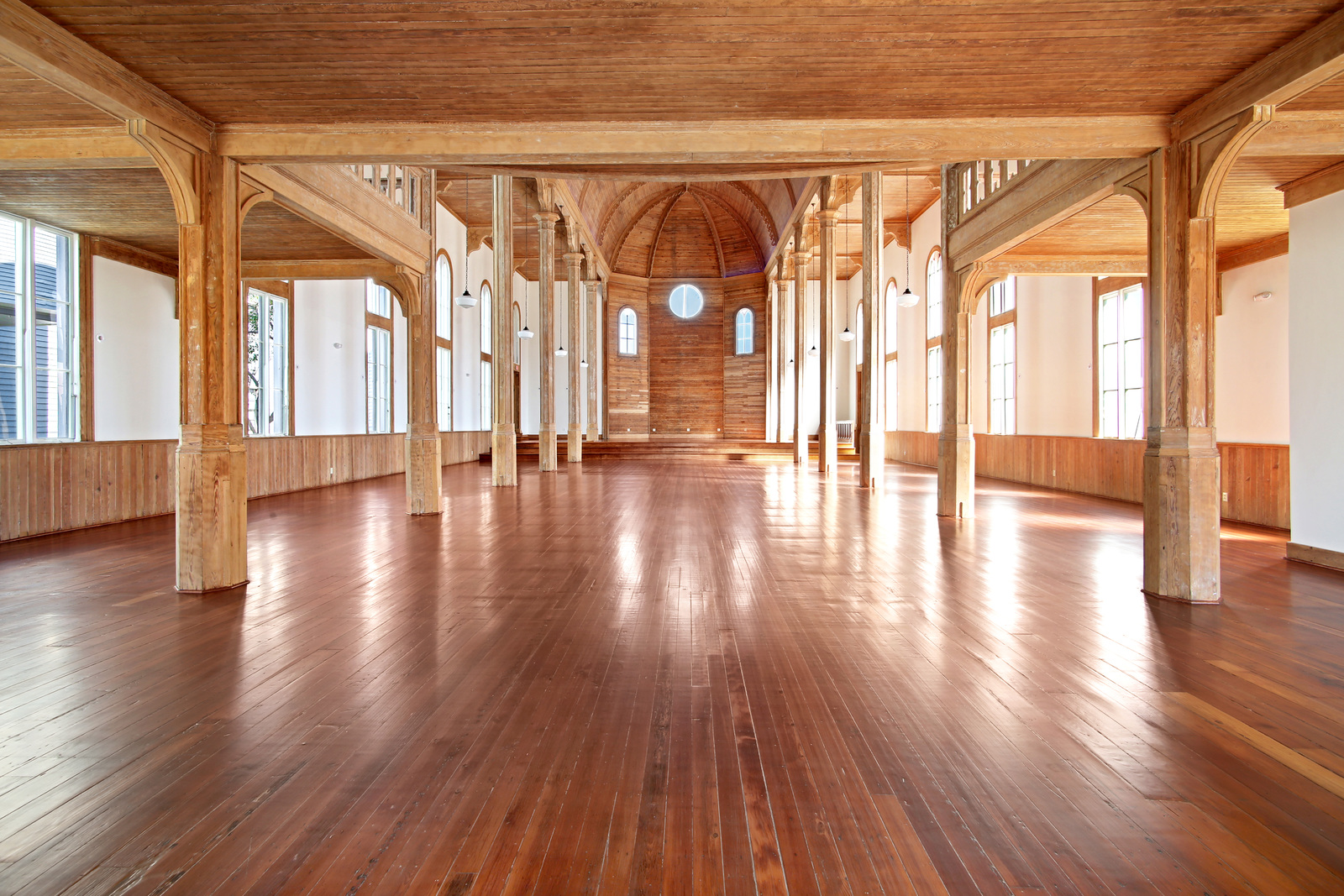Top image: Buildings in the West Monroe Historic District were built between 1882 and 1968. Photo by Evelyn Causey.
This story appeared in the February issue of the PRC’s Preservation in Print magazine. Interested in getting more preservation stories like this delivered to your door monthly? Become a member of the PRC for a subscription!
Individual buildings, historic districts and one multiple property submission were among the 15 historic resources in Louisiana added to the National Register of Historic Places in 2019. The National Park Service, which administers the National Register, listed the resources for the Louisiana State Historic Preservation Office.
These resources range in age and architectural style and cover a wide variety of our state’s unique cultural and architectural history. Listing in the National Register is an honorary designation that provides recognition, limited protection and, in some cases, financial incentives for these important properties.
The new listings from north and central Louisiana included:
- the West Monroe Historic District in West Monroe
- the Ruston Power and Light Plant in Ruston
- Tyrone Plantation in Alexandria.
The West Monroe Historic District includes 68 contributing buildings, structures and objects on the west bank of the Ouachita River around Natchitoches Street. It is listed at the local level under Criterion A in the area of commerce for its role in the economic development of West Monroe.
The Ruston Power and Light Plant is listed at the local level under Criterion A in the area of industry for its association with the history of electric power and running water in Ruston and the city’s growth during the first half of the 20th century.
Tyrone Plantation is listed at the local level under Criterion C in the area of architecture as a large scale example of the Craftsman style as applied to an 1843 raised center hall plantation home. It is also listed at the state level under Criterion D in the area of archaeology for its excellent potential for further archaeological research based on a state-conducted archaeological investigation in 1995. That investigation uncovered 2,284 artifacts as well as clear brick foundations for outbuildings original to the plantation, an old road depression, and former riverboat landing area. It may also reveal archaeological information regarding a Civil War skirmish that took place at “Graham’s Plantation” as part of the Red River Campaign.
Tyrone Plantation also is eligible for its significance as an archaeological site with great potential for providing information on the layout of outbuildings on Central Louisiana plantations; the relationship between plantations and waterways when owners relied on water transportation for the movement of crops and goods; artifacts that may reveal more information about the life on plantations before and after the Civil War; and activity during the Civil War in Central Louisiana.
Tyrone Plantation in Alexandria is locally significant in part because of the potential for archaeological resources on the property to contribute to our understanding of plantation life in central Louisiana. Photos by Paul Smith.
Moving into the lower half of the state, there were seven new National Register listings:
- the St. Scholastica Priory and Cemetery in Covington
- Laurel Street Fire Station in Baton Rouge
- the David L. and Jeanette Ross May House in Crowley
- the Bogalusa Coca Cola Bottling Company Building in Bogalusa
- Claiborne Cottage Hotel in Covington
- the Downtown Lafayette Civic Center in Lafayette
- a boundary increase for the Lake Charles Historic District in Lake Charles.
St. Scholastica Priory and Cemetery is listed at the local level under Criterion A in the areas of religion and education as the primary historic site associated with the Benedictine Sisters of St. Scholastica in St. Tammany Parish, where they served for a century as leaders in parochial education. The priory property, which consists of a priory building, cottage, pool house and cemetery, embodies the culmination of the sisters’ presence in the parish, when they were at peak growth as a religious order and at their most active as educators in the community.
Laurel Street Fire Station is listed at the local level under Criterion C in the area of architecture as an important element of a 1920s building campaign of residential-style fire stations in Baton Rouge.
The David L. and Jeanette Ross May House is listed at the local level under Criterion B in the areas of education and politics/government as the home of two of the most significant African-American educators and leaders in Crowley during segregation. The home also served as the office of David May, one of the first two African-American aldermen elected in the state in 1954.
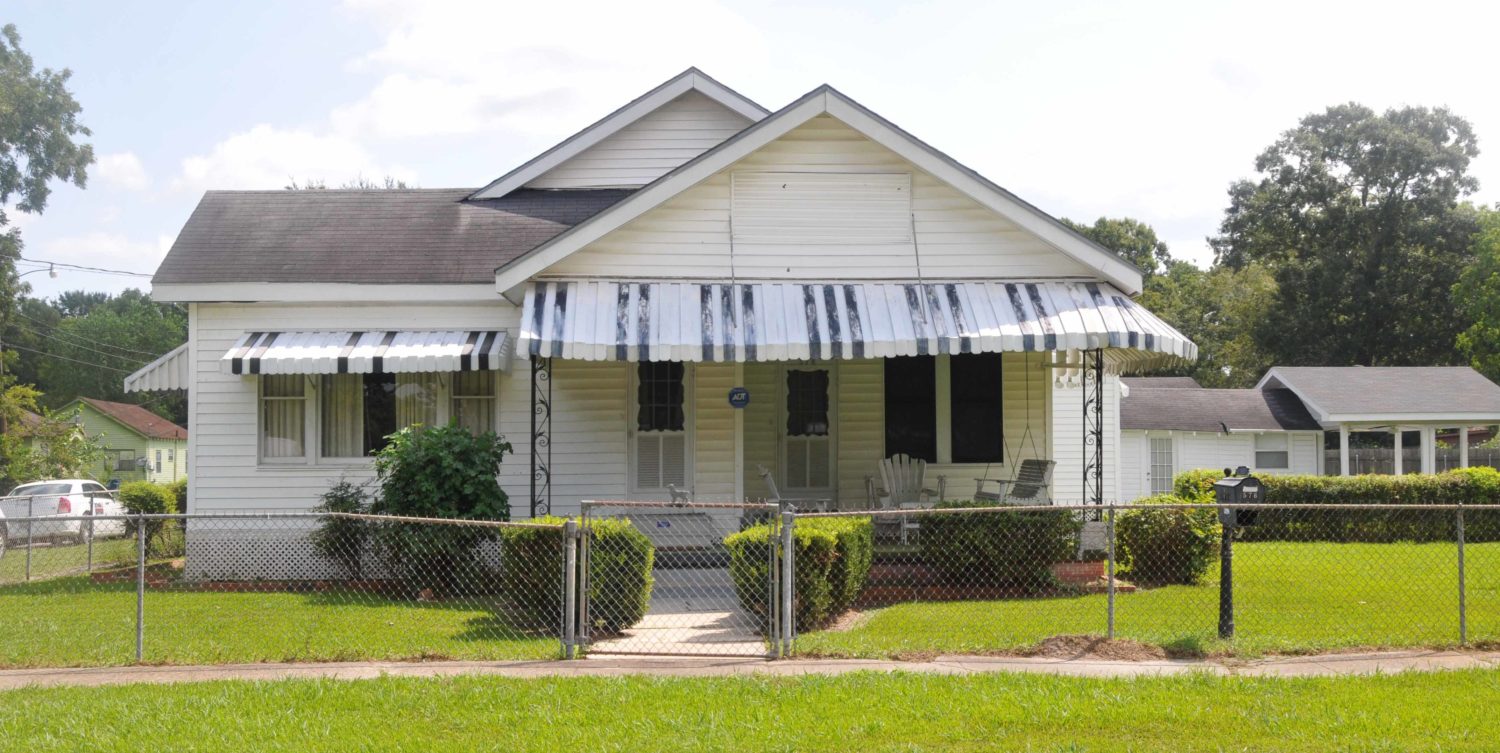
The David L. and Jeanette Ross May House in Crowley was the home of two important African-American educators and community leaders during segregation. Their home also served as a frequent meeting place for students and community members. Photo by Louisiana Division of Historic Preservation staff.
The Bogalusa Coca Cola Bottling Company Building is listed at the local level under Criterion A in the area of industry for its role in the economic and industrial development of Bogalusa during the 20th century and as a reflection of the development of Coca Cola’s standardization of its brand as bottling franchises rapidly spread across the United States in the 1930s. It is also listed under Criterion C in the area of architecture as a prime example of a prototypical Coca-Cola bottling plant from the 1930s and one of the most architecturally significant buildings remaining in Bogalusa.
Claiborne Cottage Hotel, which was originally built as the St. Tammany Parish Courthouse, is listed at the local level under Criterion A in the areas of commerce and health/medicine for its late 19th and early 20th century use as a resort hotel. The property is an important and rare survivor of the resorts associated with St. Tammany Parish’s history as the “Ozone Belt,” a health tourism destination that garnered national attention and contributed significantly to the local economy in the late 19th and early 20th centuries.
The Downtown Lafayette Civic Center is listed at the local level under Criterion A in the area of community planning and development as the center of civic activity in Lafayette and a symbol of the city’s extraordinary growth in the post-World War II period. The three buildings in the district include a former federal courthouse and post office, the former city hall and its annex, and the parish’s first purpose-built library building.
Advertisement
The boundary increase for the Lake Charles Historic District adds a former Queen Anne residence that was later converted into a funeral parlor and renovated in the Colonial Revival style. The building adds to the architectural character of the district, which includes Colonial Revival as one of its most common styles.
Finishing up the state’s 2019 National Register listings in New Orleans and the surrounding area were five resources:
- the Holiday Inn Highrise East along with a multiple-property documentation form: Non-Residential Mid-Century Modern Architecture in New Orleans, 1935-1975
- the 1939 St. Bernard Parish Courthouse
- All Saints Church and School
- the Odd Fellows Hall in Hahnville
- the U.S. Quarantine Station in Algiers.
The Non-Residential Mid-Century Modern Architecture in New Orleans multiple-property submission provides a historic context for mid-century modern architecture in New Orleans as well as registration requirements for commercial, institutional and civic buildings to be nominated under this context. The Holiday Inn Highrise East was the first building nominated as part of this multiple-property submission. It is listed at the local level under Criterion C in the area of architecture as an important example of the Corporate Commercial subtype of mid-century modern commercial architecture in New Orleans.
The 1939 St. Bernard Parish Courthouse is listed at the local level under Criterion A in the area of politics/government for its role as the seat of parish government since its Public Works Administration-funded construction in 1939. It is also listed at the local level under Criterion C in the area of architecture as an important example of the Art Deco style and the only surviving Art Deco building in St. Bernard Parish.
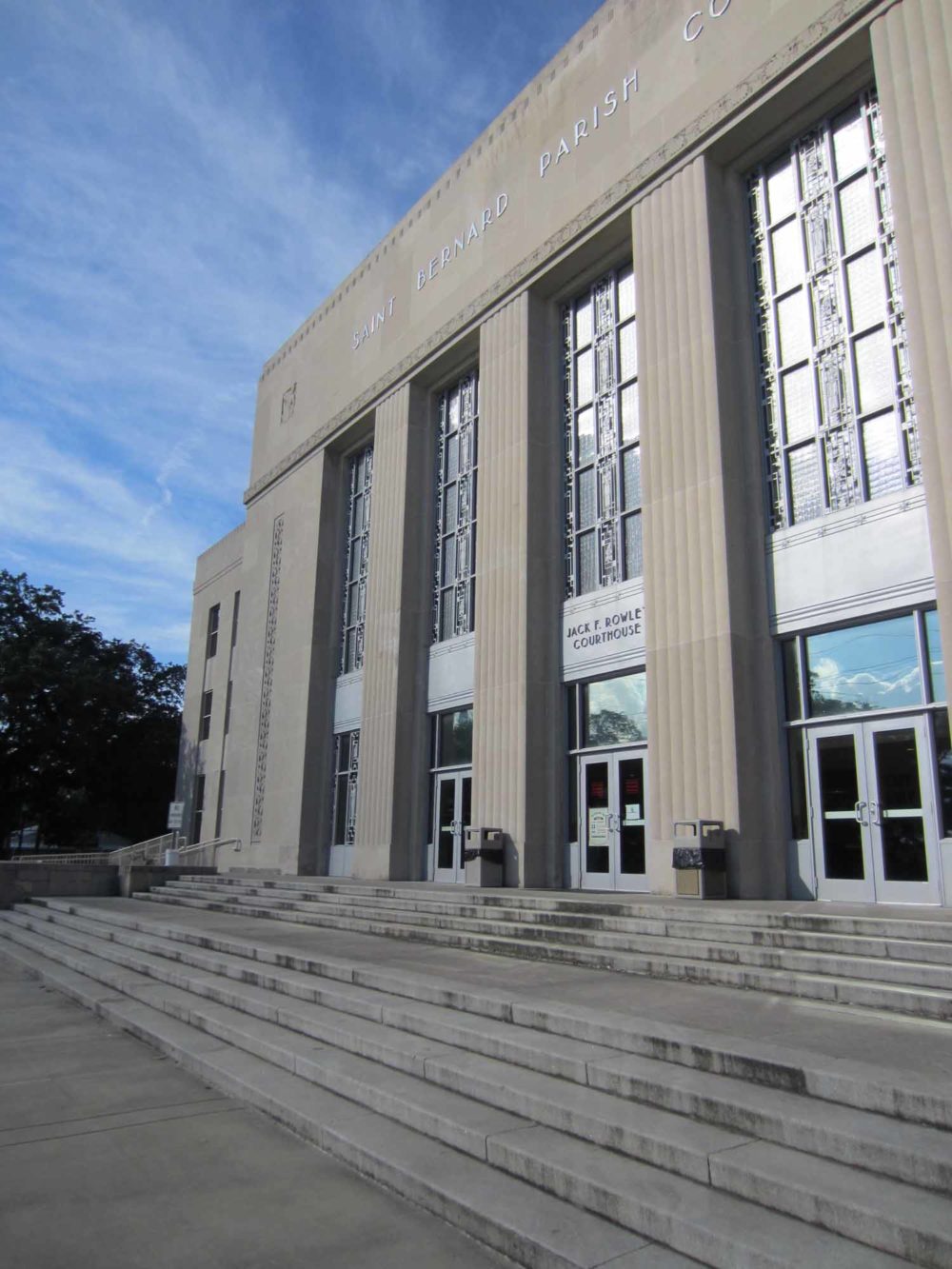
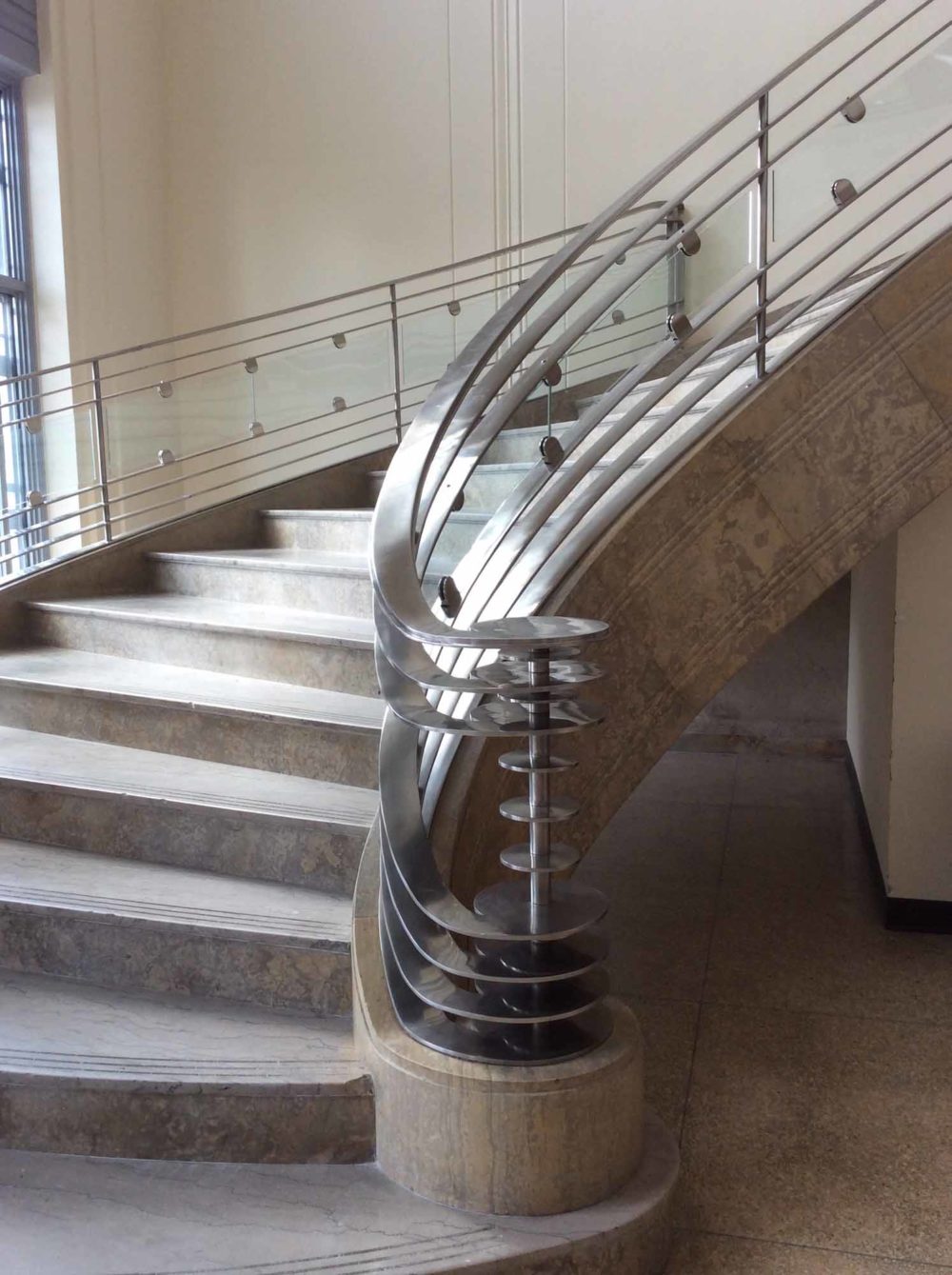
Window grilles on the 1939 St. Bernard Parish Courthouse feature stylized representations of Lady Justice and magnolia flowers. The courthouse is a prime example of Art Deco architecture in St. Bernard Parish. Photo by Isabelle Dissard-Cooper.
All Saints Church and School in Algiers is listed at the local level under Criterion A in the areas of religion and ethnic heritage. It represents the formation of separate churches for African-American parishioners, an important moment in the history of the Catholic Church in southern Louisiana. The church also has served important community functions throughout its history, including community shelters after hurricanes, youth activities and a role in the founding of the Krewe of NOMTOC (New Orleans Most Talked Of Club) and its Mardi Gras parade.
Hahnville’s Odd Fellows Hall is listed at the local level under Criterion A in the areas of ethnic heritage and social history as the home of a local chapter of an African-American benevolent society. The hall also served as one of the only facilities in Hahnville that was available to African Americans for social functions and other activities through the first half of the 20th century.
The U.S. Quarantine Station is listed at the local level under Criterion A in the areas of health/medicine and politics/government for its association with the history of health care policy as related to trade and immigration in the city of New Orleans and nationwide.
Of these 15 recently listed resources, at least eight are in the process of or will be pursuing rehabilitation tax incentives. This drives home the close relationship that the National Register and tax incentive programs maintain as well as how successful the partnership between the two programs has been. More information on each of these nominations can be found at the Louisiana Division of Historic Preservation’s National Register Database. Learn more about the overall National Register process here.
Emily Ardoin is the National Register Coordinator for the Louisiana Division of Historic Preservation.
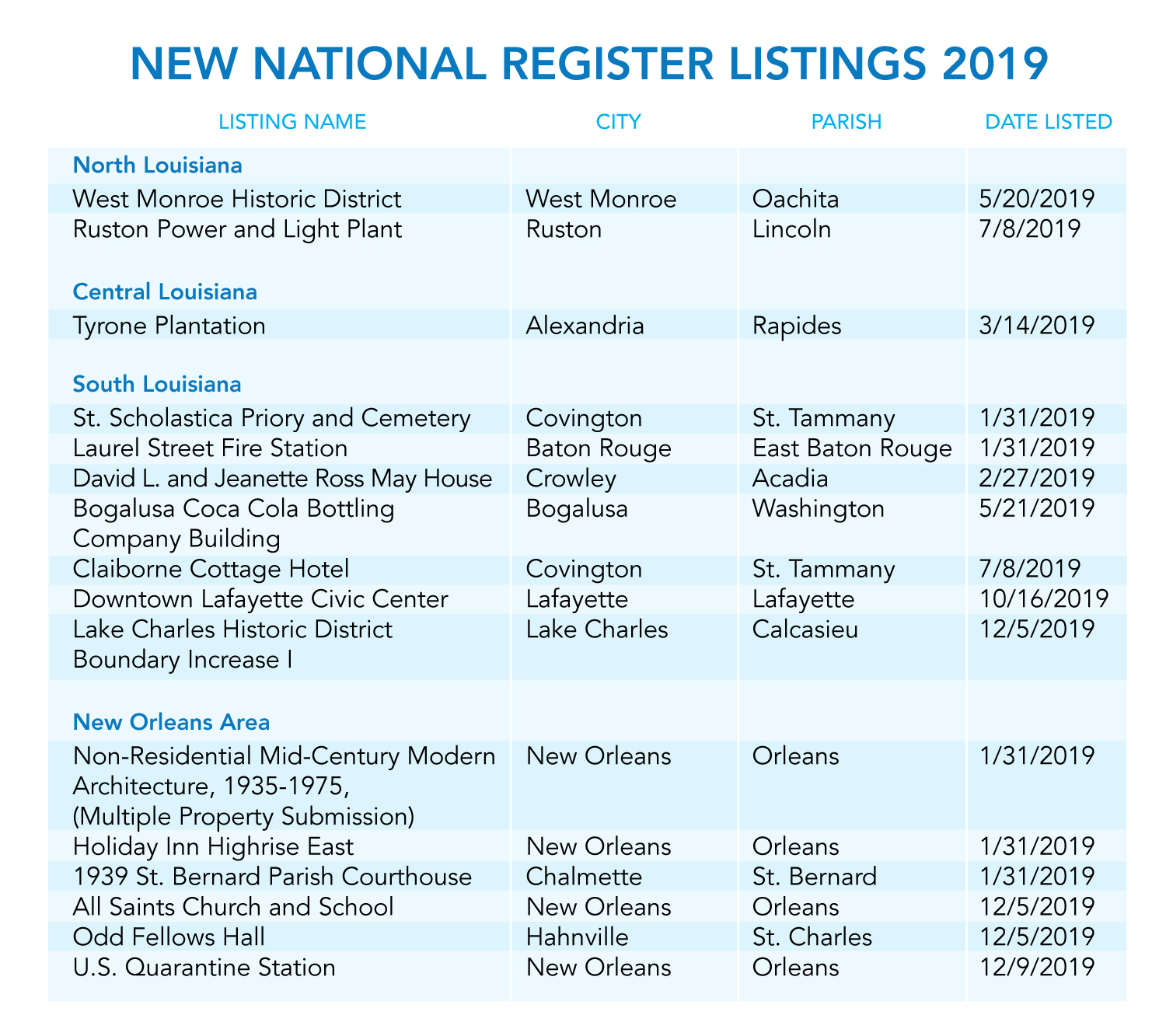
Advertisements



